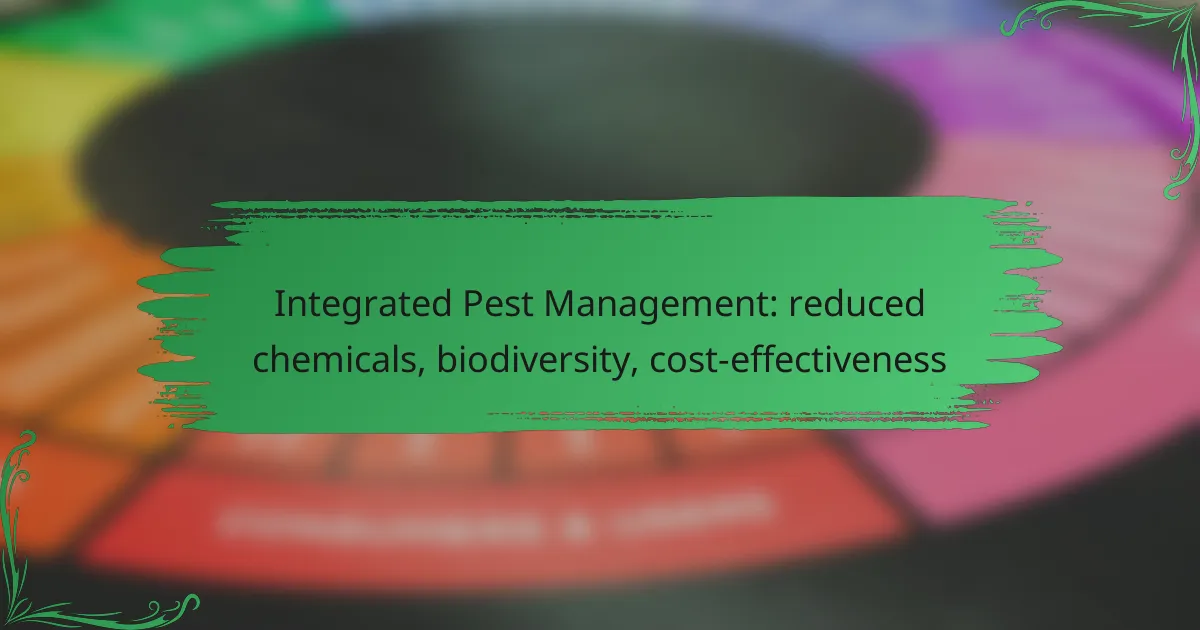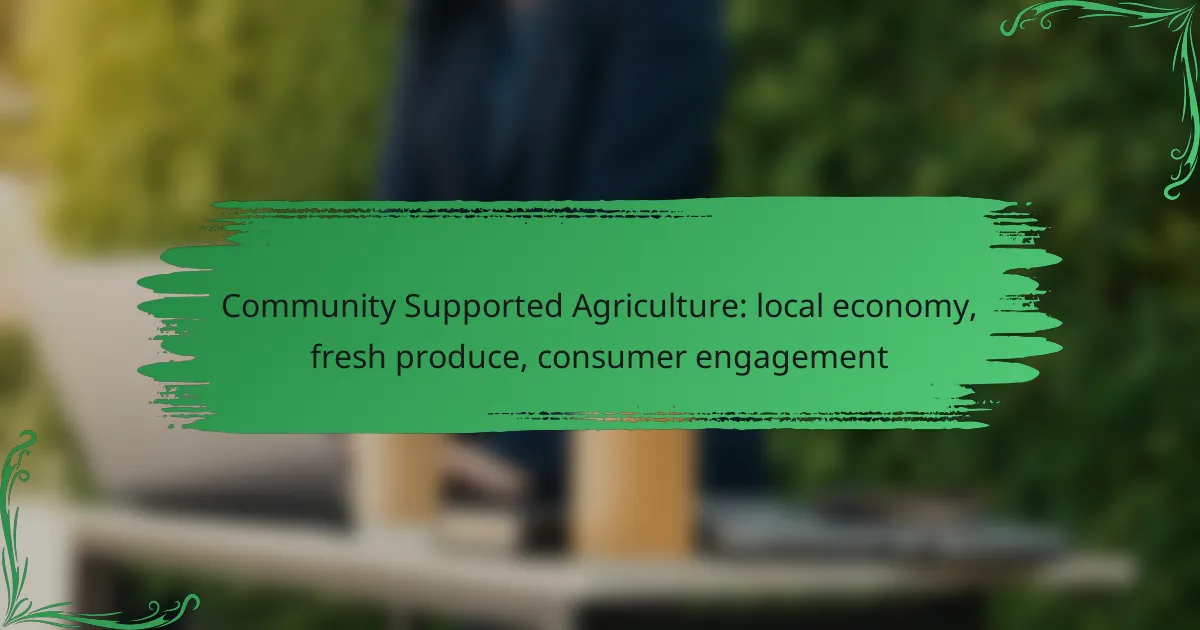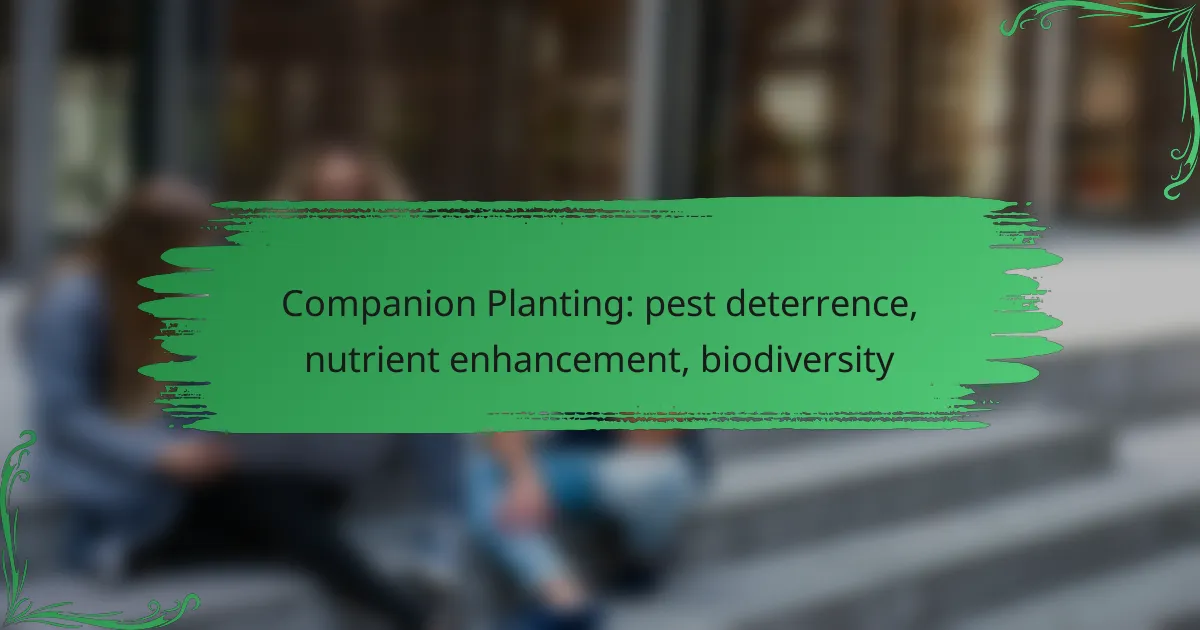Integrated Pest Management (IPM) is a sustainable approach that reduces chemical pesticide use through a combination of prevention, monitoring, and control strategies. By fostering biodiversity and promoting healthier ecosystems, IPM not only enhances agricultural resilience but also offers a cost-effective solution that can lead to significant long-term savings.
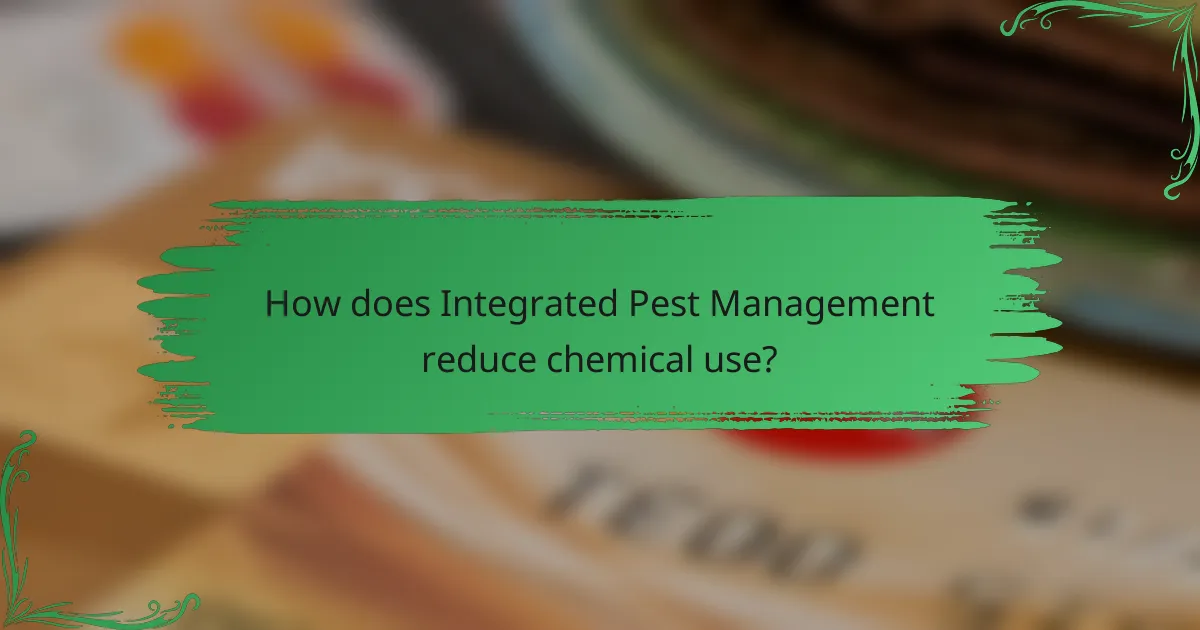
How does Integrated Pest Management reduce chemical use?
Integrated Pest Management (IPM) reduces chemical use by employing a combination of strategies that prioritize sustainable practices. By focusing on prevention, monitoring, and control methods that minimize reliance on chemical pesticides, IPM promotes healthier ecosystems and reduces environmental impact.
Utilizes biological control methods
Biological control methods involve using natural predators or parasites to manage pest populations. For example, introducing ladybugs can help control aphid infestations without the need for chemical sprays. This approach not only reduces chemical use but also enhances biodiversity by supporting beneficial organisms.
When implementing biological controls, it’s essential to identify the right natural enemies for the specific pests present. Regular monitoring is crucial to ensure that these biological agents are effective and to make adjustments as needed.
Incorporates cultural practices
Cultural practices refer to agricultural techniques that create unfavorable conditions for pests, thus reducing their prevalence. Crop rotation, intercropping, and proper sanitation are examples of cultural practices that can significantly lower pest populations without chemicals.
Farmers should consider local conditions and pest life cycles when adopting cultural practices. For instance, rotating crops annually can disrupt pest life cycles, making it harder for them to establish themselves in the new environment.
Employs mechanical controls
Mechanical controls involve physical methods to eliminate pests, such as traps, barriers, and hand-picking. These methods can be highly effective for small-scale operations and gardens, allowing for targeted pest management without chemicals.
Using mechanical controls requires regular maintenance and monitoring to ensure effectiveness. For example, setting traps at the right times and checking them frequently can help manage pest populations effectively while minimizing chemical interventions.
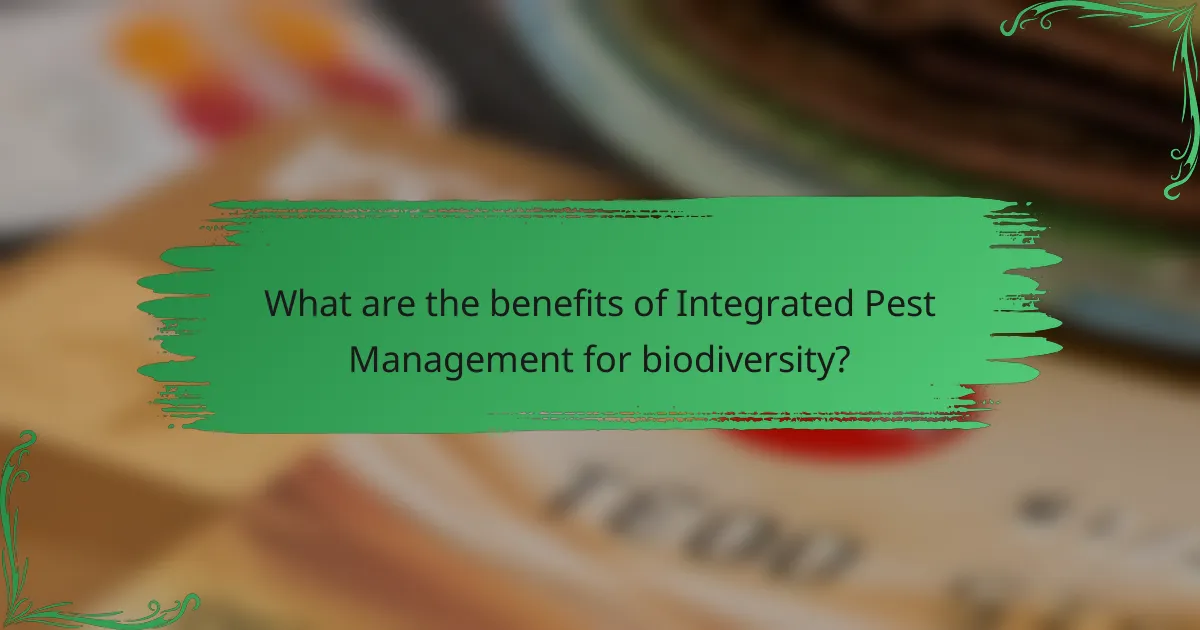
What are the benefits of Integrated Pest Management for biodiversity?
Integrated Pest Management (IPM) benefits biodiversity by promoting a balanced ecosystem, reducing reliance on chemical pesticides, and enhancing the natural resilience of agricultural systems. By incorporating diverse pest control strategies, IPM fosters a healthier environment that supports various species and their habitats.
Enhances ecosystem resilience
IPM enhances ecosystem resilience by maintaining a balance among different species, which can help mitigate the impact of pest outbreaks. By using a combination of biological control, cultural practices, and minimal chemical use, ecosystems can better withstand environmental stressors and recover from disturbances.
For example, crop rotation and intercropping can improve soil health and reduce pest populations, leading to a more robust agricultural system. This diversity in farming practices not only supports pest management but also strengthens the overall ecosystem.
Promotes beneficial insect populations
Integrated Pest Management promotes beneficial insect populations, such as pollinators and natural pest predators, which are crucial for maintaining ecological balance. By minimizing pesticide use and providing habitats for these insects, farmers can encourage their presence and effectiveness in pest control.
Planting cover crops and flowering plants can attract beneficial insects, creating a more diverse and productive agricultural landscape. This approach not only aids in pest management but also supports pollination and soil health.
Supports habitat conservation
IPM supports habitat conservation by encouraging practices that protect and restore natural environments. By reducing chemical inputs and promoting sustainable land use, IPM helps preserve critical habitats for wildlife and plant species.
Farmers can implement buffer zones, such as hedgerows or wetlands, which serve as habitats for various organisms while also providing pest control benefits. These practices contribute to biodiversity conservation and enhance the sustainability of agricultural landscapes.
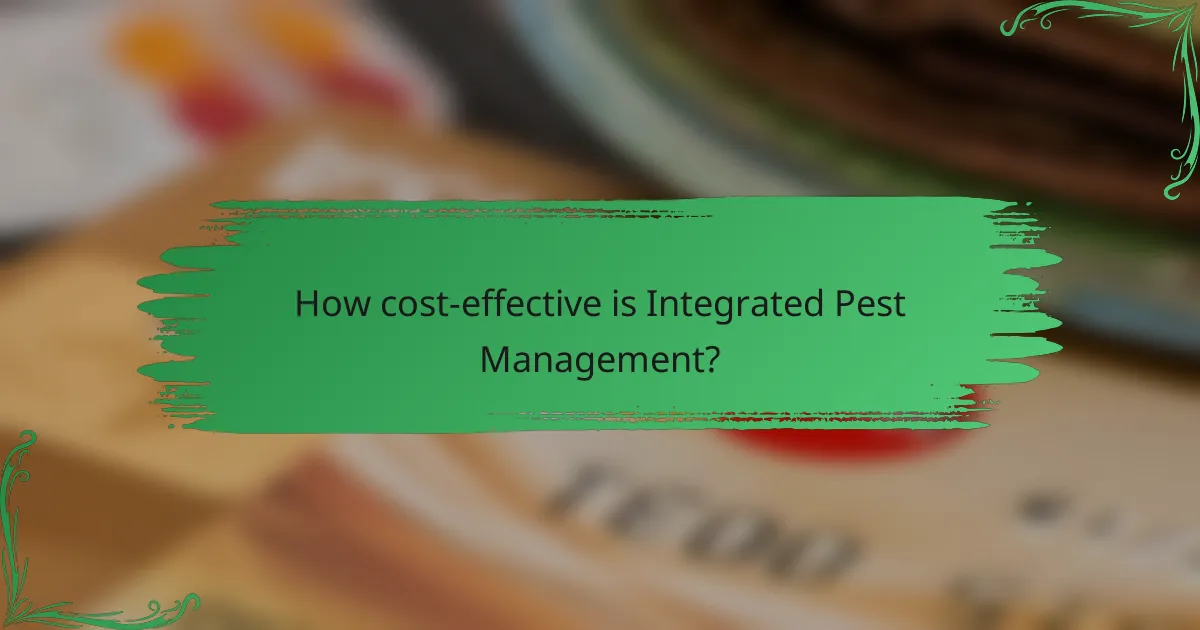
How cost-effective is Integrated Pest Management?
Integrated Pest Management (IPM) is a cost-effective approach that combines various pest control methods to minimize expenses while promoting environmental health. By reducing reliance on chemical pesticides, IPM can lead to significant savings over time and enhance the sustainability of agricultural practices.
Reduces long-term pest control costs
IPM strategies focus on prevention and monitoring, which can significantly lower long-term pest control expenses. By using techniques such as crop rotation, biological controls, and habitat manipulation, farmers can reduce the frequency and volume of chemical applications needed.
For example, implementing beneficial insects to control pests can decrease the need for costly pesticides, leading to savings that accumulate over multiple growing seasons. This proactive approach often results in lower overall expenditures compared to conventional methods that rely heavily on chemical treatments.
Minimizes crop damage and loss
By effectively managing pest populations, IPM helps to minimize crop damage and loss, which can directly impact a farmer’s bottom line. Early detection and targeted interventions allow for timely responses to pest threats, reducing the likelihood of significant crop destruction.
Farmers employing IPM may experience lower rates of crop loss compared to those using traditional methods, as the integrated approach addresses pest issues before they escalate. This can lead to more stable income and reduced financial risk associated with crop failures.
Increases yield through sustainable practices
IPM not only reduces costs but also enhances crop yields through sustainable agricultural practices. By fostering biodiversity and maintaining healthy ecosystems, IPM creates a more resilient agricultural environment that can support higher productivity.
For instance, practices such as intercropping and maintaining natural habitats for predatory insects can lead to improved pollination and pest control, ultimately resulting in greater yields. Farmers who adopt IPM often find that their crops are healthier and more productive, which contributes to long-term profitability.
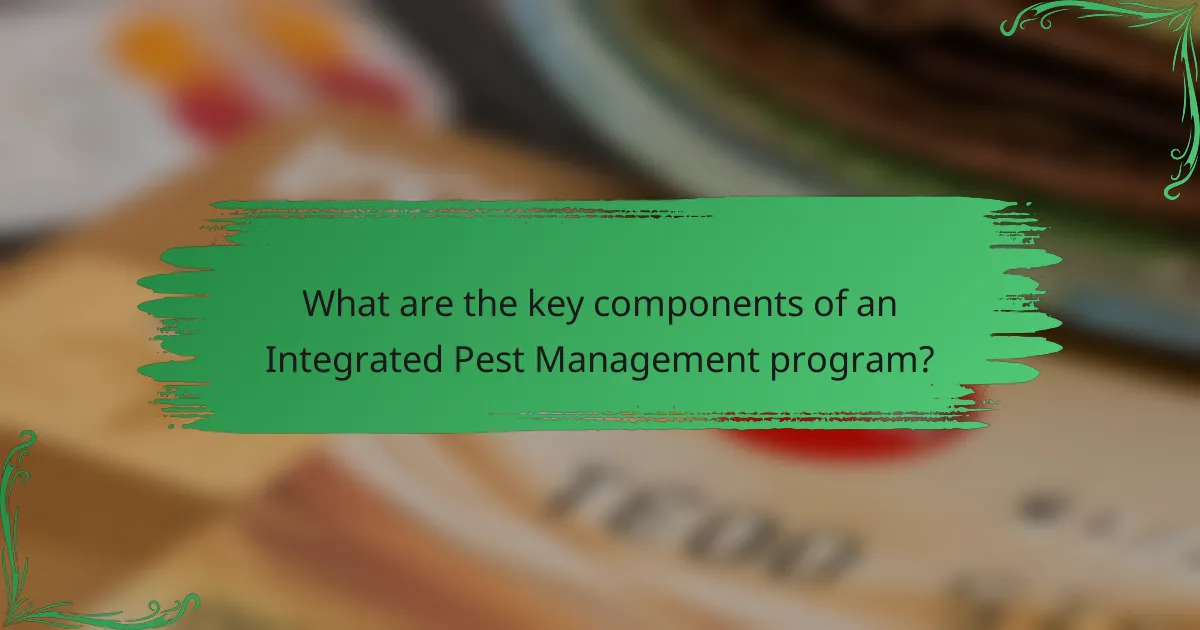
What are the key components of an Integrated Pest Management program?
An Integrated Pest Management (IPM) program combines various strategies to manage pests effectively while minimizing chemical use and promoting biodiversity. Key components include monitoring pest populations, establishing action thresholds, and implementing control strategies tailored to specific situations.
Monitoring and assessment
Monitoring and assessment involve regularly checking pest populations and their impacts on crops or ecosystems. This can include visual inspections, traps, and data collection to identify pest species and their numbers. Accurate monitoring helps determine the need for intervention and informs decision-making.
Using tools like pheromone traps or sticky traps can provide insights into pest activity levels. Regular assessments allow for timely responses, potentially reducing the need for chemical interventions.
Thresholds for action
Thresholds for action refer to the pest population levels at which control measures should be implemented. These thresholds vary by crop type, pest species, and economic considerations, ensuring that actions are taken only when necessary. For example, a threshold might be set at a specific percentage of crop damage or a certain number of pests per trap.
Establishing clear thresholds helps prevent unnecessary treatments, saving costs and protecting beneficial organisms. Farmers should regularly review and adjust these thresholds based on changing conditions and pest dynamics.
Implementation of control strategies
Implementation of control strategies involves selecting and applying methods to manage pests effectively. This can include cultural practices, biological controls, and, when necessary, targeted chemical applications. For instance, rotating crops can disrupt pest life cycles, while introducing natural predators can help control pest populations.
It is crucial to choose strategies that align with IPM principles, focusing on sustainability and minimal environmental impact. Combining multiple strategies often yields the best results, as it reduces reliance on any single method and enhances overall pest management effectiveness.
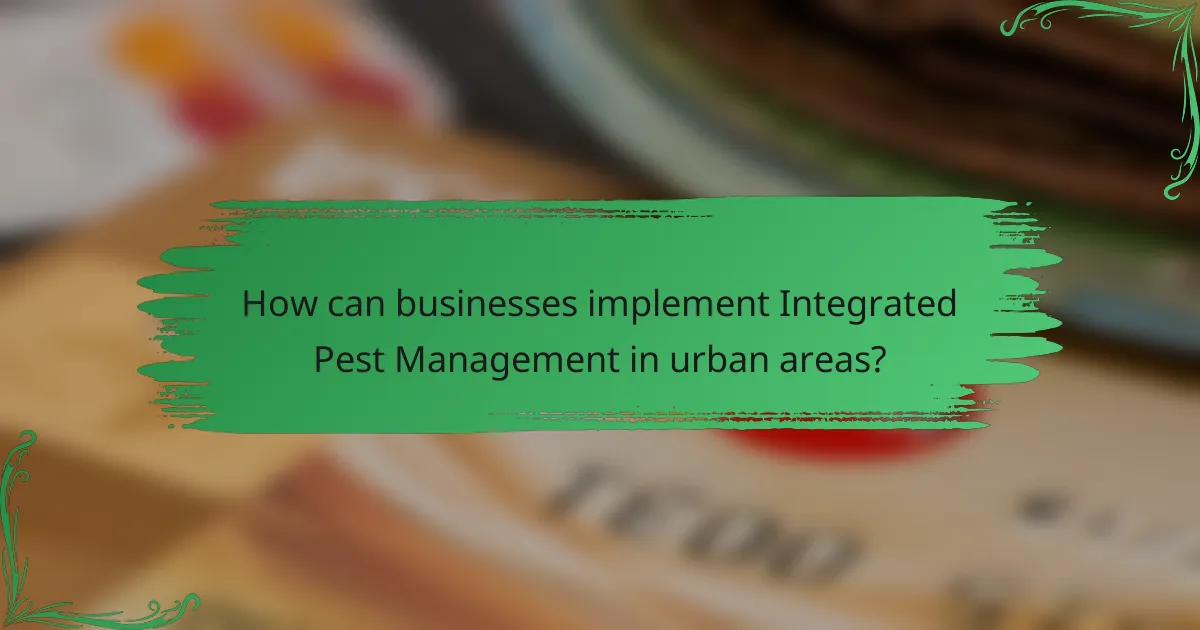
How can businesses implement Integrated Pest Management in urban areas?
Businesses can implement Integrated Pest Management (IPM) in urban areas by adopting a holistic approach that reduces chemical use while promoting biodiversity and cost-effectiveness. This involves collaboration with pest control services, engaging the community, and utilizing technology for effective monitoring.
Collaboration with local pest control services
Partnering with local pest control services is essential for effective IPM implementation. These professionals can provide expertise in identifying pest species and recommend targeted control methods that minimize chemical use.
Consider establishing contracts with pest control companies that prioritize eco-friendly practices. This collaboration can lead to customized pest management plans that align with local regulations and community standards.
Community education and outreach
Educating the community about IPM practices is crucial for successful implementation. Businesses can host workshops or distribute informational materials that explain the benefits of reduced chemical use and the importance of biodiversity.
Engaging the community fosters a sense of responsibility and encourages residents to adopt IPM strategies in their own properties. This can include promoting native plants that attract beneficial insects and reduce pest populations.
Use of technology for monitoring
Utilizing technology for monitoring pest populations can enhance the effectiveness of IPM strategies. Tools such as smart traps and mobile apps allow businesses to track pest activity in real-time, enabling timely interventions.
Investing in technology can lead to cost savings by preventing infestations before they escalate. Regular data analysis helps refine pest management strategies and ensures compliance with local health regulations.
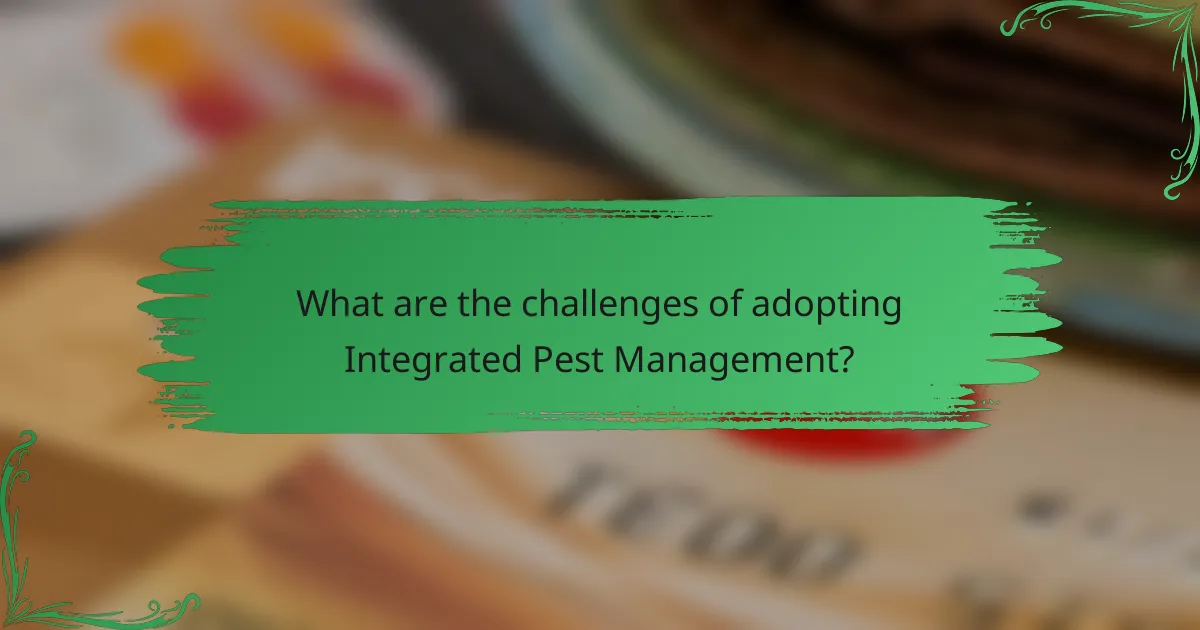
What are the challenges of adopting Integrated Pest Management?
Adopting Integrated Pest Management (IPM) can be challenging due to initial costs, the need for specialized training, and potential resistance to change. These factors can hinder the effective implementation of IPM strategies, which aim to reduce chemical use while promoting biodiversity and cost-effectiveness.
Initial cost of implementation
The initial cost of implementing Integrated Pest Management can be a significant barrier for many farmers and businesses. Expenses may include purchasing new equipment, adopting technology for monitoring pests, and investing in alternative pest control methods. While these upfront costs can be high, they often lead to long-term savings by reducing reliance on chemical pesticides.
For example, transitioning to IPM may require an investment of several hundred to a few thousand dollars, depending on the scale of the operation. However, over time, these costs can be offset by lower pesticide expenses and improved crop yields.
Need for specialized training
Implementing Integrated Pest Management effectively requires specialized training for staff and stakeholders. Understanding pest life cycles, ecological interactions, and the appropriate use of biological controls are essential components of IPM. Without this knowledge, the risk of ineffective pest management increases, potentially leading to crop damage and financial loss.
Training programs can vary in cost and duration, ranging from a few hours of workshops to more extensive courses lasting several weeks. Investing in education not only enhances the effectiveness of IPM strategies but also fosters a culture of sustainability and environmental stewardship within the community.
